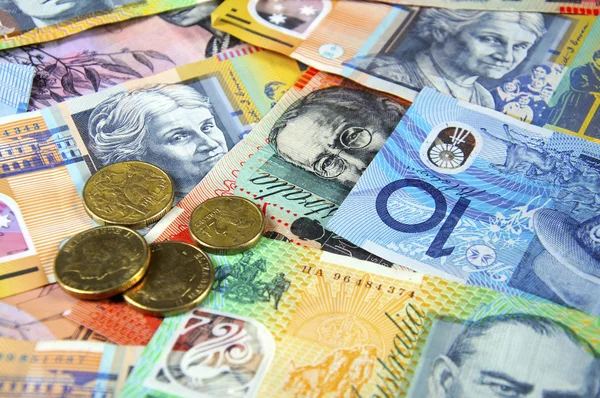Australian dollar remains sluggish, possibly impacted by a risk off mood.
The Australian Dollar (AUD) consolidates with a negative bias on Tuesday, following losses in the previous session, probably due to persistent risk-off sentiment amid a sluggish ASX 200 index. Furthermore, China plans to achieve 5% GDP growth in 2024 by focusing on job creation and risk reduction. Chinese officials underline the relevance. of pursuing constructive fiscal programs and careful monetary policy.
Australian Services PMI reached a 10-month high of 53.1, up from 49.1 the previous month.
The Australian dollar is unfazed by the excellent performance of the Judo Bank Services Purchasing Managers Index (PMI), which reached a ten-month high of 53.1 in February. This increase moved the index above the 50.0 mark, indicating expansion, and it outperformed the prior figure of 49.1. In addition, the Composite PMI increased to 52.1 from 49.0, reaching a nine-month high. Traders are now anticipating the publication of Gross Domestic Product (GDP) figures for the fourth quarter of 2023 on Wednesday.
The US Dollar Index (DXY) remains largely stable, moving sideways. Amid low US Treasury yields. Market traders are closely anticipating critical United States (US) employment numbers set to be released this week. As They evaluate the Federal Reserve’s (Fed) possible future moves. Fed Chairman Jerome Powell is scheduled to testify before the US House Financial Services Committee on Wednesday and Thursday on the Fed’s Semi Annual Monetary Policy Report. Which could provide additional insight into the central bank’s stance and impending policy choices.
Daily Market Movers: The Australian dollar consolidates amid a flat equity market.
The Australian Current Account Balance increased to 11.8 billion in the fourth quarter of 2023. Compared to the previous estimates of 5.6 billion and 1.3 billion.
ANZ – Roy Morgan The Australian Consumer Confidence Index fell from 83.2 to 81.0. This latest statistic represents the lowest level observed so far in 2024.
Australia Melbourne Institute Inflation for February indicated a year-over-year increase of 4.0%.
lower than the preceding increase of 4.6%.
In January, Australian Building Permits (MoM) fell by 1.0%, despite a projected increase of 4.0%. Nonetheless, this result marked an improvement over the previous decrease of 10.1%.
Australia’s TD Securities Inflation (MoM) fell by 0.1% in February, following a 0.3% increase the previous month.
The Australian Bureau of Statistics reported that Company Gross Operating Profits (QoQ) rose by 7.4% in the fourth quarter of 2023, compared to an estimated 1.8% growth and a 1.6% fall in the previous quarter.
Australian Building Permits (YoY) increased by 10% in January, reversing a prior decrease of 24%.
The Judo Bank Manufacturing PMI reported a little increase in Australia’s manufacturing sector, with the February figure climbing to 47.8 from 47.7 the prior period.
The Seasonally adjusted Australian retail sales (MoM) increased by 1.1% in January, falling short of expectations of 1.5% but rebounding from a 2.7% loss the previous month.
Australian Private Capital Expenditure increased by 0.8% in the fourth quarter of 2023, compared to the predicted 0.5% and 0.6% previously.
According to Matthew De Pasquale, an Economist at Judo Bank, the February Services PMI indicates that the sector had a soft landing in 2023 and is currently experiencing a comeback in activity in early-2024. While the durability of business activity is encouraging for economic growth and employment, it raises question on the probability of inflation returning to goal within the Reserve Bank of Australia’s anticipated timescale.
Chinese Services PMI fell to 52.5 in February, from 52.7 the previous month.
China’s National People’s Congress (NPC) spokesman Lou Qinjian informed the news media that
The Congress will have its annual conference in Beijing from March 5 to March 11. According to Lou, the government “will make new laws to deepen economic reform. Including financial institutional reform to promote private companies.” Furthermore, the Premier of the People’s Republic of China (PBoC), Li Qiang, is likely to unveil China’s economic growth target of roughly 5% during the session on Tuesday.
Raphael Bostic, President of the Atlanta Federal Reserve (Fed), made waves on Monday by voicing concern about attaining a smooth landing. He does not anticipate consecutive rate reduction when they begin. But he does predict two 25-basis-point decreases in 2024. While inflation is projected to return to the 2% objective, Bostic believes it is too early to celebrate triumph.
Based on the CME FedWatch Tool, The probability of a 25 basis point rate drop in March is 3.0%. While the likelihood of cuts in May and June is 21.8% and 50.9%, respectively.
US ISM Manufacturing PMI (February) fell to 47.8 from 49.1, missing the market forecast of 49.5.
The US ISM Manufacturing PMI (February) fell to 47.8 from 49.1. Missing the market forecast of 49.5.
In February, the US Michigan Consumer Sentiment Index fell to 76.9. Falling short of the market’s forecast of an unchanged 79.6.
In January, the US Personal Consumption Expenditure (PCE) Price Index increased by 2.4% year on year. Compared to 2.6% previously, in line with market expectations. The indicator climbed by 0.3% month on month, compared to 0.1% the previous month.









